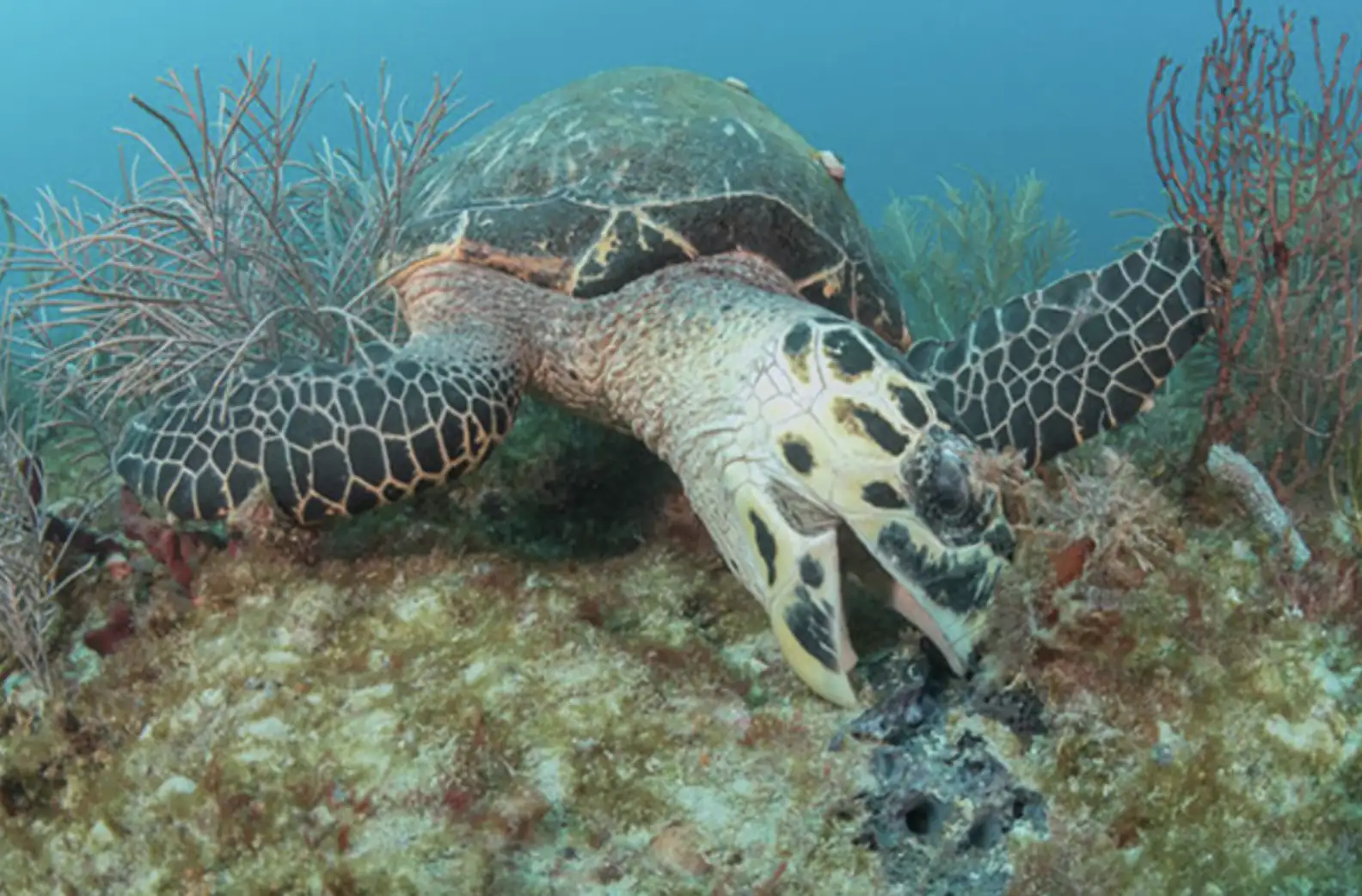Do you see him?
A few years ago, while conducting fieldwork along the shores of the U.S. Virgin Islands, marine biologist Dr. Larry Wood spotted a tiny movement in the sand. Nestled among fallen leaves and driftwood was a perfectly camouflaged creature — a baby hawksbill sea turtle. With its dark green-gray skin and brown shell blending seamlessly into the beach debris, the hatchling was almost invisible.
Wood, who serves as executive director of the National Save The Sea Turtle Foundation, immediately recognized the rare sight. The hawksbill turtle is one of the world’s most endangered sea turtle species, and seeing a newly hatched one making its way toward the ocean is a special moment even for an experienced researcher.
At the time, Wood was working alongside local scientists as part of a nesting survey to monitor sea turtle populations. Their research focused on identifying nesting sites — which hawksbill turtles often build high up on the shore, tucked under trees and beach grasses for protection.
“Female hawksbills usually nest beneath vegetation to give their eggs extra cover from predators and harsh sunlight,” the foundation explained in a Facebook post.
Hawksbill turtles are distinguished by their elegant, patterned shells and narrow, pointed beaks, which are perfectly adapted for extracting food from tight crevices in coral reefs. They are one of the ocean’s few “spongivores,” meaning their diet consists mainly of sea sponges.
“The digestive system of a hawksbill turtle is uniquely designed to handle the sharp spicules and toxins found in sponges,” the foundation wrote. “Their eating habits help prevent sponges from overtaking coral reefs — with a single adult capable of consuming more than 1,000 pounds of sponges each year.”
Sadly, hawksbills have been pushed to the brink of extinction. For centuries, they were hunted for their striking shells, which were carved into jewelry and ornaments as part of the global tortoiseshell trade.
“Unfortunately, about 90 percent of hawksbills worldwide were lost due to this trade,” Wood told The Dodo.
Today, hawksbills are protected by law, but they continue to face threats from habitat loss, marine pollution, and climate change.
Still, Wood remains hopeful. Through continued conservation research and public awareness, there’s a path forward for the species’ recovery. He emphasizes that anyone can contribute to hawksbill conservation — by refusing to buy tortoiseshell products, supporting coral reef protection, and helping keep coastlines clean.
If these efforts succeed, hawksbills may once again thrive — gliding through the reefs, feasting on sponges, and living freely in the waters they’ve called home for millions of years.
